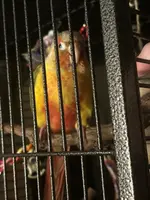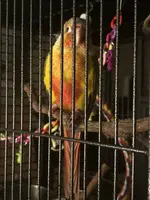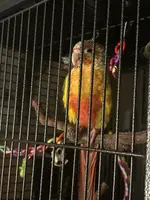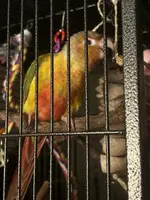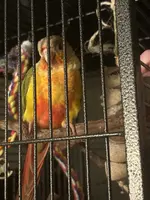Fauna
Member
- Dec 12, 2023
- 63
- 59
- Parrots
- Pineapple conure- Tiago
Two budgies- Edith & Azalea
Brought this sweet baby home a few days ago. Shes super lively, adventurous and curious about everything. She will immediately go and explore any new thing that is put in, and around her cage. I want to start getting her used to my hands but i dont know what the best way to do it would be. Its hard to start doing it not through the bars since shes full flight and will fly away from me when shes out of the cage. Shes not entirely nervous of me when the bars are between us and ive gotten a few exploretory pinches (picture attached)  Oh goodness i ramble. Basically, i just need advice on how to successfully hand tame a full flighted baby pineapple conure
Oh goodness i ramble. Basically, i just need advice on how to successfully hand tame a full flighted baby pineapple conure 

